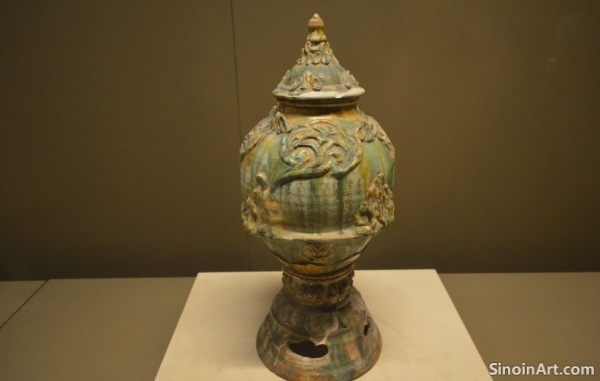Collecting and Appreciating Tang Ceramics Today
|
Today, Tang Dynasty ceramics are highly valued by collectors, museums, and art enthusiasts around the world. Their historical significance, artistic beauty, and technical innovations make them among the most sought-after objects of Chinese art. The enduring appeal of these pieces is a testament to the genius of Tang ceramic artists.  Collecting Tang ceramics requires a detailed knowledge of the different styles, kilns, glazes, and forms of the period. Expertise in these areas is essential for authenticating pieces and assessing their value. A careful study of this art form is well rewarded.  The value of Tang ceramics is determined by various factors, including age, condition, rarity, provenance, and artistic quality. Pieces with well-preserved sancai glazes and those with fine and detailed decoration are highly sought after. These pieces are often found in the collections of major museums around the world.  Museums and galleries around the world showcase Tang ceramics, educating the public about their importance, and preserving them for future generations. Their ongoing care of these pieces is vital for preserving this part of history. The Tang Dynasty is a constant source of artistic inspiration to this day. Appreciating Tang ceramics today means understanding not only their aesthetic qualities but also their historical and cultural significance, recognizing the skill and creativity of the potters who made them. Appreciating the cultural context is essential for a full appreciation of this art form. |
Tag : Tang ceramics collecting, Chinese art, Antique pottery, Sancai appraisal, Art history
Related information
- The Role of Kilns in Tang Ceramic Production
- The Influence of Foreign Cultures on Tang Ceramics
- The Evolution of Tang Porcelain Forms
- Technological Advances in Tang Kilns
- The Vibrant World of Tang Ceramics: An Overview
The advancements in kiln technology during the Tang Dynasty played a pivotal role in the transformation of Chinese ceramics. Kilns are the heart of ceramic production, and the innovations made during this period directly impacted the quality, variety, and scale of ceramic wares. Understanding Tang kilns sheds light on the technical expertise of potters and the sophisticated infrastructure that supported the flourishing ceramic industry.
The Tang Dynasty’s openness to international exchange significantly influenced its ceramics, evident in the adoption of foreign patterns, vessel forms, and decorative techniques, reflecting the cosmopolitan spirit of the era.
The forms and shapes of Tang Dynasty ceramics were as diverse and dynamic as the society that produced them. From simple utilitarian bowls to elaborate ceremonial vessels, the ceramic forms reflected the varied functions and aesthetic preferences of the time. The evolution of Tang ceramic forms was also driven by technical innovations and artistic experimentation, resulting in a wide range of shapes and sizes that showcase the ingenuity of Tang potters.
Tang Dynasty advancements in kiln technology, such as high-firing kilns and lead glaze control, enabled potters to produce a greater variety of higher-quality ceramics, significantly influencing later ceramic traditions.
Tang Dynasty ceramics (618-907 AD) are characterized by vibrant colors, diverse forms, and innovative techniques, most notably three-color (sancai) glazes, reflecting the prosperity and cultural exchange of the era.